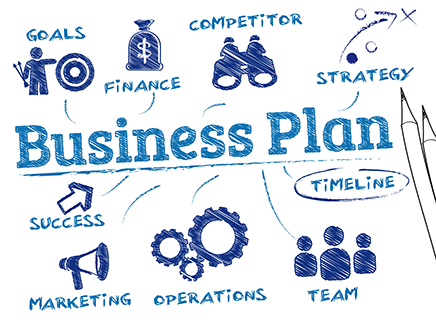Part three of a three part series
Does a nonprofit need a business plan? The answer is “yes.” With this column we share guidance from Bridget Ciaramitaro, experienced nonprofit planner, so you can get to work planning for the business success of your nonprofit.
First, we asked Ciaramitaro, “what is a business plan for a nonprofit?”
“A business plan builds upon the strategic plan. In some ways, the business plan determines the feasibility of implementing the strategic plan. I’ve heard it said that a strategic plan is a wish list without a business plan. This plan includes the vision, mission and values of the organization, and the strategic goals and objectives. It includes the program model for the organization answering the question “why do we do what we do?” The program model aids in determining what needs to be done in order for the organization’s program(s) to be successful. This includes determining if all the program activities actually support the program model. This is an opportunity for the nonprofit to determine if there has been mission drift.
Questions to ask during this time include: “Are some programs or activities being offered simply because at one time there was a funding stream? Are programs really making a difference in the lives of the people being served?”
Ciaramitaro continued, “The business plan addresses organizational needs for the next three to five years. Is there a facility need? Does the organization have debt that needs to be paid off? Has the organization been running a deficit? What needs to be funded in order to increase program effectiveness or serve more people? What is a unit of service for the organization? What is the cost of a unit of service now? How will that change future forward? With a three to five year planning budget in place, what are the sources of funds for making this budget doable? These and many other questions will lead the nonprofit in determining a business model and affirming a core business.”
“A core business might be defined as the one thing the organization does that defines why they are needed. It is the reason for their existence. The business model determines how this core business will be funded thus the importance of researching, identifying and pursuing the source of funds needed to implement the budget.”
She asks the hard questions that require work to answer. Don’t be intimidated, just get to work.
Ciaramitaro explained that business planning requires an organization to know its vision, mission and strategic goals and its current financial position well beyond the profit and loss statement. She encourages use of an outside consultant who is willing to ask hard questions to lead the process, but warns “the consultant cannot ‘write the plan’ for the organization. Strategic business planning is a process that involves the people served, the board, staff, and other stakeholders.”
What’s next?
Having a strategic, business and fundraising plan is one thing, using it is another. You have to make sure you use these plans as management tools to guide your organizations work. While the plans will be implemented by staff, Ciaramitaro reminds us that “it is the board of directors’ responsibility to make sure the strategic business plan is implemented. Much of the plan is often tasked to the staff, but without board involvement the implementation will not be successful.”
She cautioned that “things often take longer to get done than expected. Leadership changes may affect implementation. If only a couple of people have been involved in the planning, it will be difficult to implement. When checking back with organizations I have worked with in strategic business planning, I usually find that the plan is being implemented.”
We asked Ciaramitaro for a few words of wisdom as it relates to creating and implementing a business plan for their organization. She leaves you with these thoughts. “I am always surprised at the many ‘aha’ moments that take place in strategic business planning. Although there is some dread and fear on the beginning and some worry that the effort will not produce any good outcomes, the aha moments always come. The most important one is the realization that the need for resources is greater than they thought. This is followed by a realization that a strategy for raising those resources is possible and then down the road, there is excitement when they realize they can raise those resources. This is one reason why it is important to have a knowledgeable consultant leading the process and asking hard questions so that the final plan represents truth, is transparent and there is a rationale that confirms that it is doable.
Our thanks to Bridget Ciaramitaro for her leadership and persistence in this work.
Share these columns within your organization and get ready to plan. Bridget Ciaramitaro is the president of Ciaramitaro & Associates, LLC. Reach her at [email protected] or via LinkedIn.
When you are ready to grow your fundraising, call Saad&Shaw-Comprehensive Fund Development Services at (901) 522-8727 or via email at [email protected].
Copyright 2019 – Mel and Pearl Shaw
When you’re ready to grow your fundraising, call us at (901) 522-8727 or visit www.saadandshaw.com.
Image courtesy of 123RF.com.






